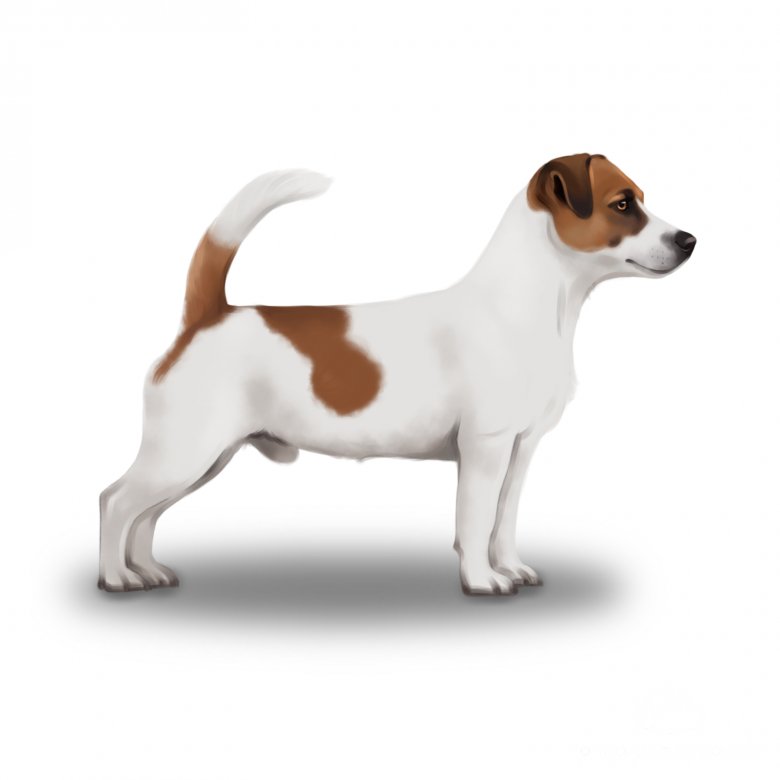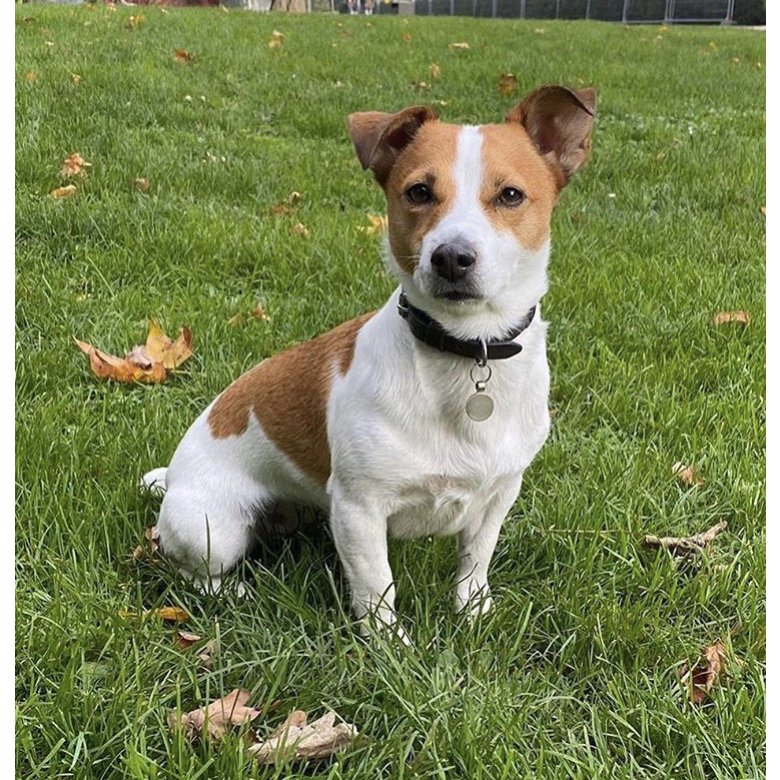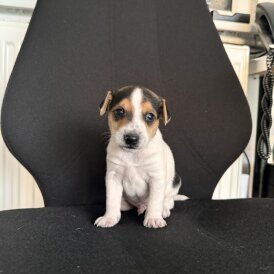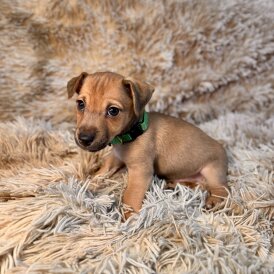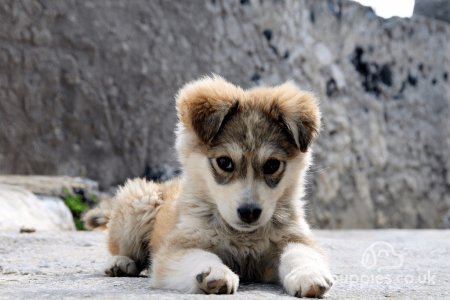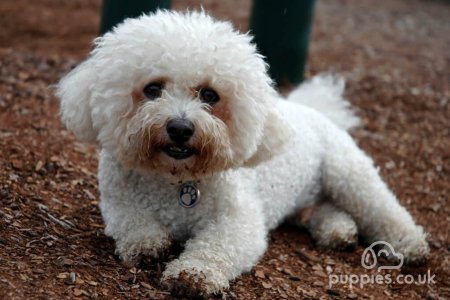Why Jack Russell Terriers are great
The Jack Russell Terrier is a very playful breed. Originally bred for hunting, their curious and boisterous nature will be rewarding for any owner. They are both loyal and protective towards their families, making for an exceptional family pet. Some highlights:
Despite being a smaller breed, Jack Russell Terriers are highly intelligent and enjoy being both mentally and physically stimulated.
Jack Russell Terriers fit well into a family environment and generally are affectionate and friendly with children.
Grooming and Feeding Jack Russell Terriers is relatively low maintenance.
Things to consider when looking at Jack Russell Terriers for Sale
Jack Russell Terriers are a typical terrier in the sense that they enjoy being inside with a family, rather than outside in a kennel or cage, which is something to consider when buying a puppy. Some downsides to the Jack Russell Terrier:
Jack Russell Terriers were bred for hunting and will need vigorous amounts of exercise.
This breed’s confidence can at times be seen as aggressive, especially towards other dogs or even children.
If Jack Russell terriers are not trained from a young age, their barking and behaviour can become troublesome.
History of Jack Russell Terriers
The Jack Russell Terrier is a broad and small working terrier. Originally bred for hunting and chasing foxes or other small animals out from their holes, they are driven by their hunting instinct. Jack Russell terriers originate from the hunting dogs bred by Reverend John Russell in the 19th Century. He was a parson, particularly enthusiastic about hunting, and felt the need to introduce a dog which could be distinguished from the chase, thus its predominantly white coat. However, John Russell bred them so that their temperament, although aggressive, was restrained enough not to harm their prey in any way, so as to end the chase. The breed has been preserved well and so the Jack Russell Terrier that we know today is almost the same genetic makeup as those dogs from the 19th Century.
Appearance
Jack Russell Terriers are easily confused with the Parson Russell Terrier and other small white terriers. Jack Russell terriers tend to be shorter-legged and broader than the Parson Russell Terrier, and are more common in the UK. Jack Russell Terriers are longer than they are tall, and have a lively and well-coordinated gait.
How big is the Jack Russell Terrier?
An adult Jack Russell is between 25-38cm tall.
How heavy is a Jack Russell Terrier?
Both male and female Jack Russell Terriers will range from 6-8kg in weight.
What Colour is the Jack Russell Terrier?
Jack Russell Terrier’s coats are mainly white, with splodges of any colouring, but they are more traditionally recognised as white with tan markings.
Temperament
Do Jack Russell Terriers bark a lot?
Yes and this is something to consider if you live perhaps in an apartment or a building in which other residents are in close proximity. However, this can easily be engrained out of them with obedience training from a puppy.
Are Jack Russell Terriers easy to train?
Yes, their hunting nature means they respond well to instruction and the owner should act almost as ‘head of the pack’. If taught from a puppy, Jack Russell Terriers will quickly pick up and remember tricks too!
Are Jack Russell Terriers playful?
Their behaviour is extremely playful and the Jack Russell Terrier’s inquisitive personality is often endearing and amusing. They even enjoy joining in with your hobbies, for example acting as goalie!
Are Jack Russell Terriers good with children?
Jack Russell Terriers have a tendency to become possessive over their family, forming strong bonds with children also. Watch out though for younger children under around 6, Jack Russell Terriers will not put up with ear or tail grabbing and this could end in accidents.
Are Jack Russell Terriers good with other pets?
Jack Russell Terriers can be known to attack cats or other small household pets. If you are considering introducing a Jack Russell Terrier into your home with other animals, it is advised to train the terrier from a puppy that rough play is unacceptable and to keep them mainly separated.
Can I leave a Jack Russell Terrier Alone?
A Jack Russell Terrier can be for short periods of time alone, as long as they have been intensely exercised prior. However their hunting instinct can make them untrustworthy outside, therefore all gardens must be securely enclosed if they are to be let outside alone.
Do Jack Russell Terriers like water?
Jack Russell Terriers are not big fans of water, and prefer digging to swimming. However, with care and patience they can become well accustomed to water.
Health
How long do Jack Russell Terriers live?
Jack Russell terriers tend to live for around 13-15 years.
How much exercise does a Jack Russell Terrier need?
Originally bred for hunting, Jack Russell terriers will require at least 35 to 40 minutes of exercise a day. They are smart terriers and games such as fetch will stimulate their mind and feel rewarding both for owner and dog. An upside to their energy and intellect makes them perfect for agility competitions.
What are Jack Russell Terriers’ Common health issues?
In general, Jack Russell Terriers are well renowned for being a healthy breed and do not suffer too many serious health concerns. However, the most prevalent disorder in the Jack Russell Terrier is Primary Lens Luxation, in which the lenses of the eye become displaced. They can also suffer luxation of the kneecaps or SCA (Spinocerebellar Ataxia), a progressive degeneration of the spinal cord), but both these conditions are more rare.
Care
How much space do I need for a Jack Russell Terrier?
Despite being a small breed, Jack Russell terriers will fare better with an average to large sized garden, in which they can burn off their energy! They also enjoy having their own space, unlike perhaps traditional family dogs such as a Golden Retriever or Labrador, who are well-known for enjoying lots of attention.
How much grooming do Jack Russell Terriers need?
Jack Russell Terriers do not require much grooming at all! They have a short, coarse coat, originally to help protect their skin when digging and hunting. Their coats are either smooth-coated, rough-coated or display a mixture of both, called a broken coat. All three types are easily maintained, but bear in mind that they shed.
Average costs
How much does it cost to keep a Jack Russell Terrier? As a rough guide in pricing: Cost to buy: roughly £500-1000 for a well-bred Jack Russell Terrier puppy Other costs (Vet, Food, Grooming etc): £50-80 per month
Specific Buying Guide
You can read our general buying guide here (/advice-on-buying-a-puppy/), with the most important thing being going to view your Jack Russell Terrier Puppy, seeing it with its mother, and checking the quality of the breeder. More specifically, here is some Jack Russell Terrier puppy buying advice:
Jack Russell Terriers are a popular dog, but look extremely similar to other terriers, especially when they are puppies. Always try to meet both the parents before purchasing the puppy, along with their pedigree and Breeder’s Certificate. Also, it may be helpful to enquire if they test their dogs for PLL (Primary Lens Luxation) and SCA (Spinocerebellar Ataxia), or if any history exists in the family.
Other reading, Adopting Jack Russell Terrier Puppies and Rescue Organisations
A big thank you to the following sources who helped to shape this article: https://www.therealjackrussell.com/index.php https://www.thekennelclub.org.uk/our-resources/media-centre/issue-statements/the-jack-russell/ https://www.jackrussellterrierrescueuk.org/ https://www.jackrusselladvice.co.uk/ https://www.dogbreedinfo.com/jackrussellterrier.htm https://www.happyjackrussell.com/








